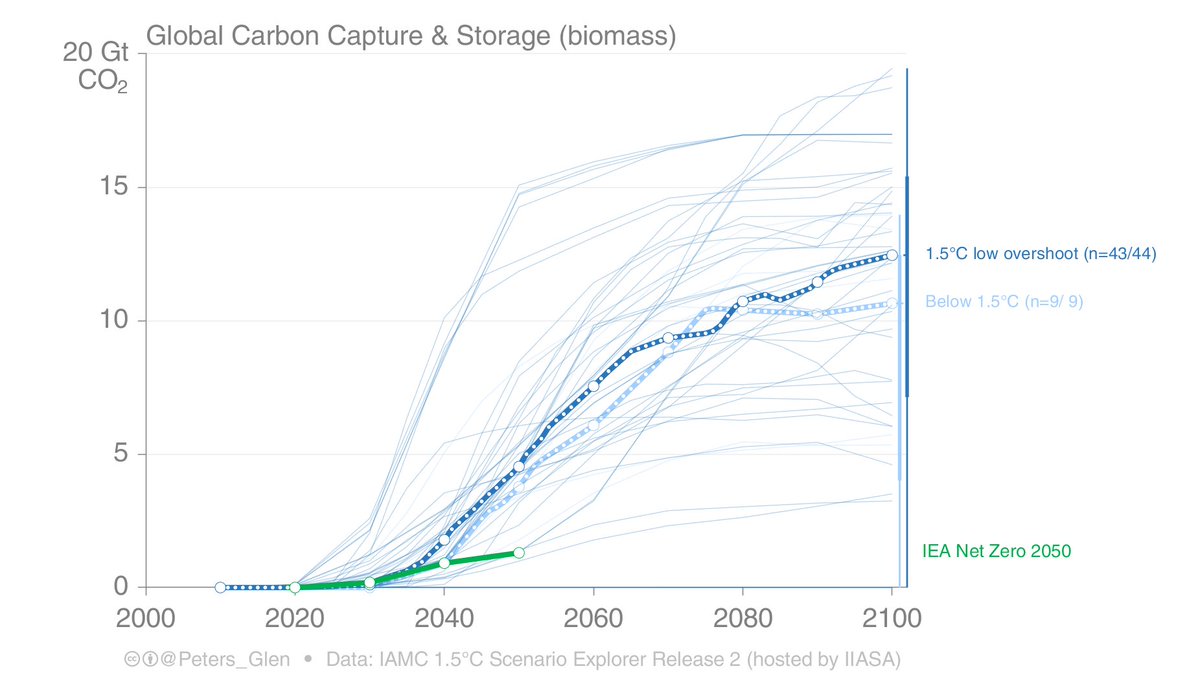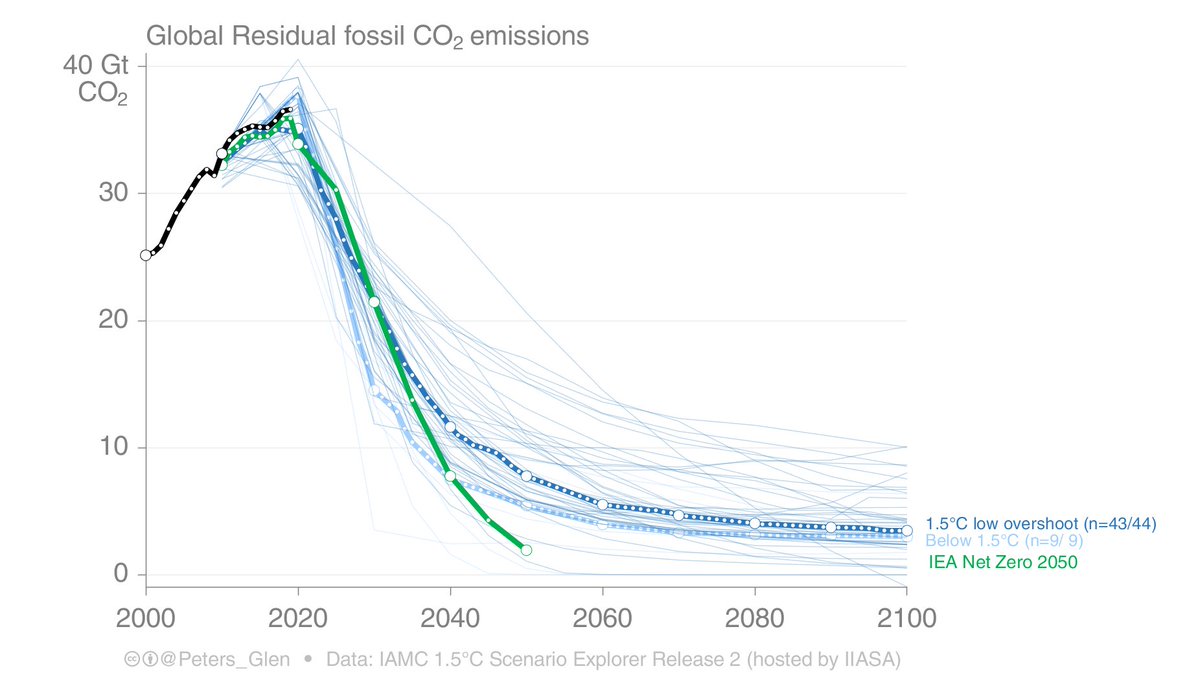The IEA Net Zero 2050 scenario uses quite a lot less Bioenergy with Carbon Capture & Storage (BECCS) than scenarios assessed by the IPCC.
Consequently, all else equal, the IEA NZE2050 uses less fossil fuel in 2050 than most IPCC SR15 scenarios.
1/
iea.org/reports/net-ze…
Consequently, all else equal, the IEA NZE2050 uses less fossil fuel in 2050 than most IPCC SR15 scenarios.
1/
iea.org/reports/net-ze…

The IEA, in contrast, has a decent (not huge) amount of Direct Air Capture (DACCS) of 0.6GtCO₂/yr.
Not many scenarios assessed by the IPCC SR15 use DACCS (4 out of 53 have non-zero data, the other 2 marked have zero DACCS)
The scenario with high DACCS is from MERGE-ETL.
2/
Not many scenarios assessed by the IPCC SR15 use DACCS (4 out of 53 have non-zero data, the other 2 marked have zero DACCS)
The scenario with high DACCS is from MERGE-ETL.
2/

Since IEA NZE2050 reaches net-zero CO₂ emissions in 2050, the removals (tweets 1 & 2) must balance with (residual) emissions in 2050.
The NZE2050 clearly has far less fossil fuel use in 2050 than most IPCC SR15 assessed 1.5°C scenarios.
3/
The NZE2050 clearly has far less fossil fuel use in 2050 than most IPCC SR15 assessed 1.5°C scenarios.
3/

Adding the emissions (tweet 3) & removals (tweet 1 & 2) leads to net CO₂ emissions.
The IEA NZE2050 is well within the cloud of other 1.5°C scenarios, towards the lower end, but with a lot less fossil fuel use.
4/
The IEA NZE2050 is well within the cloud of other 1.5°C scenarios, towards the lower end, but with a lot less fossil fuel use.
4/

The NZE2050 still uses a decent amount of standard Carbon Capture & Storage (~7.6GtCO₂/yr in 2050), which is less than the median in IPCC assessed 1.5°C scenarios, but still a large amount.
5/
5/

Most of the CCS is on industry, & the CCS on fuel supply is mainly hydrogen or biofuels production.
6/
6/

You can find a lot of data and information in the IEA NZE2050 report, which is freely downloadable.
Though, the format of the data makes it a little challenging to get into plotting code - to put it diplomatically (cc @IEA, @daniel_huppmann)
iea.org/reports/net-ze…
7/7
Though, the format of the data makes it a little challenging to get into plotting code - to put it diplomatically (cc @IEA, @daniel_huppmann)
iea.org/reports/net-ze…
7/7
• • •
Missing some Tweet in this thread? You can try to
force a refresh
























